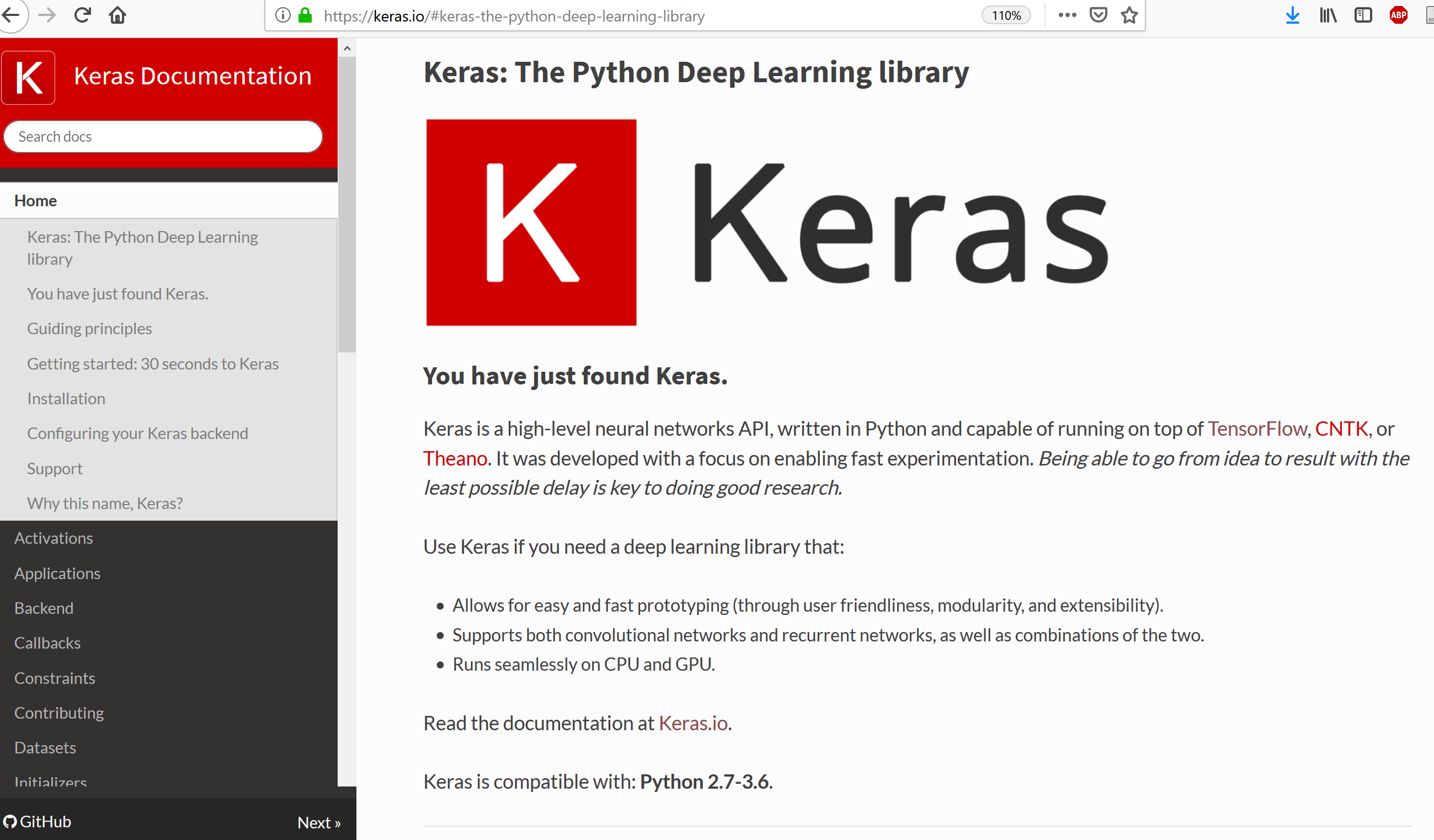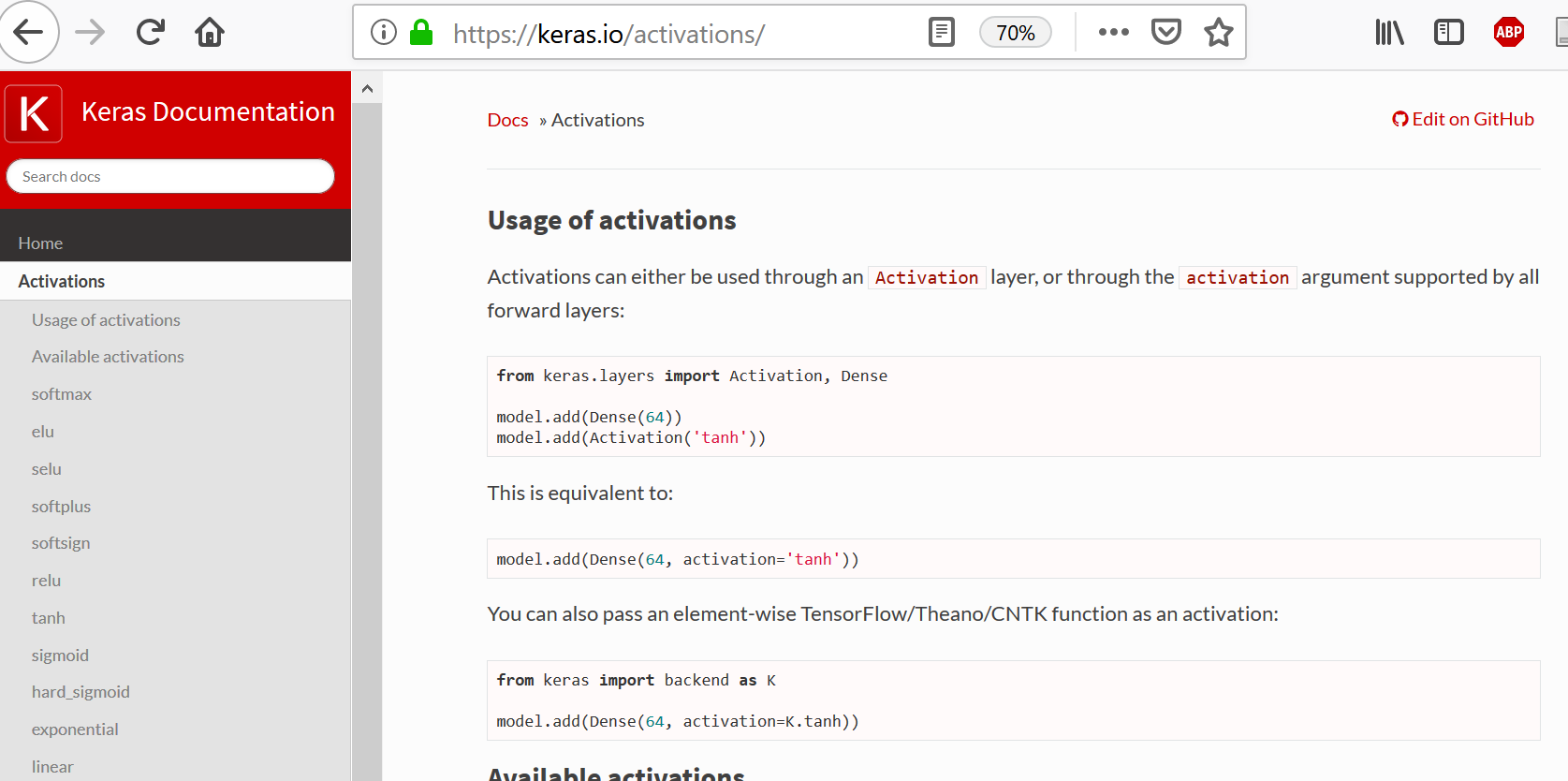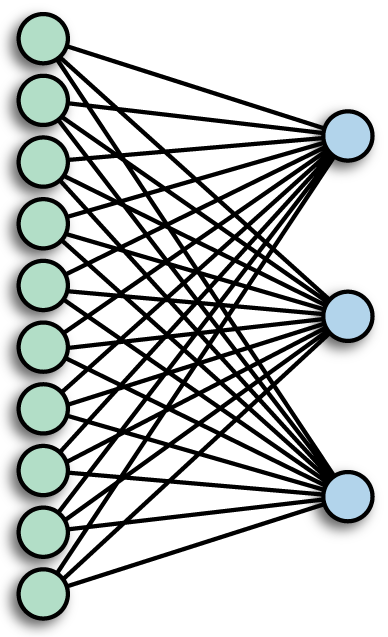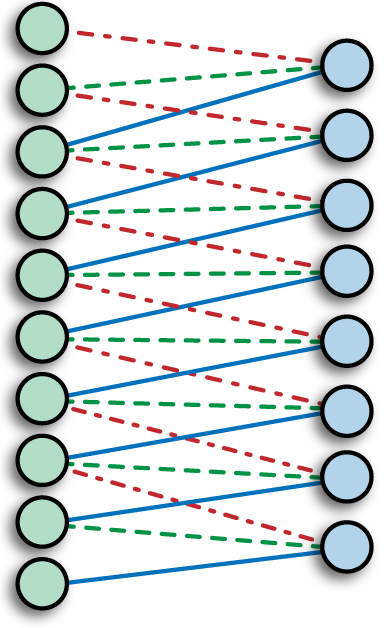Outline
- Keras API
- CNN example
import numpy as np
from matplotlib import pyplot as plt
%matplotlib inline
Install Tensorflow & Keras¶
Ideally using Anaconda.
Command line:
conda create -n tensorflow_py36 python=3.6
conda activate tensorflow_py36
conda install tensorflow
conda install keras
conda install matplotlib (and whatever else...)
Or from within Anaconda-Navigator using GUI.
Plan B: Cloud-based Notebooks¶
Google CoLab: https://colab.research.google.com/notebooks/welcome.ipynb
Kaggle Kernel: https://www.kaggle.com/kernels
Chollet Book (Google employee who worked on Keras)¶
Tries to be very practical, non-mathematical (uses code to explain concepts).
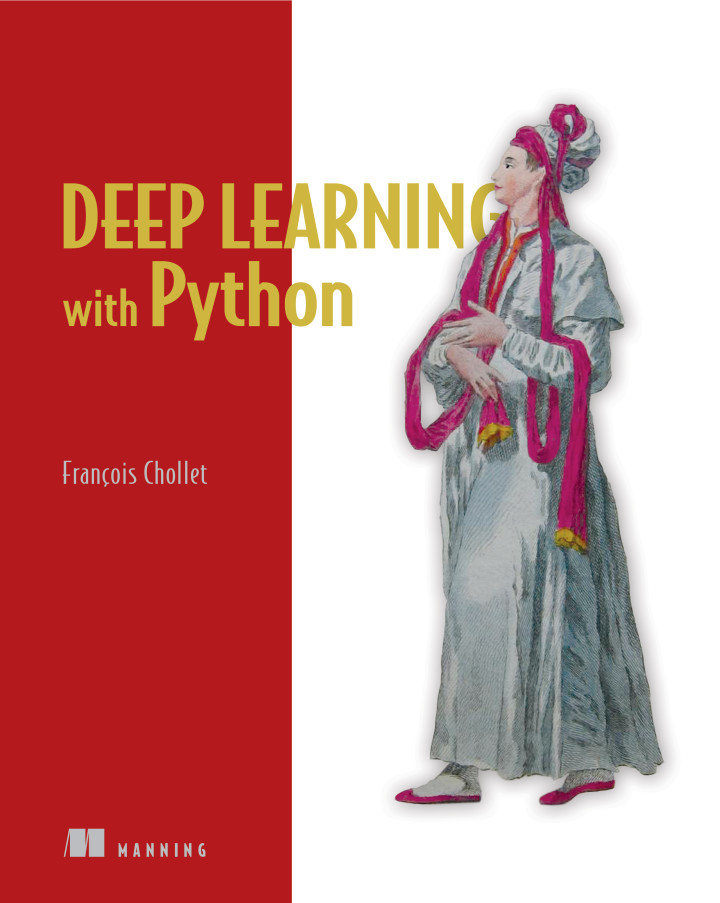
Formal Machine Learning Framework & Jargon 1/3¶
Given training data $(\mathbf x_{(i)},y_i)$ for $i=1,...,m$.
Choose a model $f(\cdot)$ where $f(\mathbf x)\approx y$
Define a loss function $L(f(\mathbf x), y)$ to minimize.
Formal Machine Learning Framework & Jargon 2/3¶
Have data $(\mathbf x_{(i)},y_i)$, model $f(\cdot)$, and loss function $L(f(\mathbf x), y)$.
Want to minimize true loss which is the expected value of the loss.
We approximate it by minimizing the Empirical loss (a.k.a "risk") $$ L_{emp}(f) = \frac{1}{m}\sum_{i=1}^m L\big(f(\mathbf x_{(i)}), y_i\big) $$ Emirical Risk minimization.
Note how you can parallelize this operation ("embarrasingly parallel")
Recall stochastic optimization with batches and epochs.
Formal Machine Learning Framework & Jargon 3/3¶
Emirical Risk minimization: $$ f^* = \arg \min\limits_f L_{emp}(f) = \arg \min\limits_f\frac{1}{m}\sum_{i=1}^m L\big(f(\mathbf x_{(i)}), y_i\big) $$ To trade-off model risk and simplicity, we include regularizer: $$ f^* = \arg \min\limits_f \big( L_{emp}(f) + \lambda R(f) \big) = \arg \min\limits_f L_{reg}(f) $$
Just cryptic talk for the same optimization problem we've been doing. But can be extended to cover many different techniques.
Tensor Perspective¶
Input data $\mathbf x$ can be viewed as vectors, matrices, or beyond... generally called "tensors"
Consider a layer with multiple outputs (e.g. multi-class classifier) $$ f_1(\mathbf x) = \hat{y}_1 \\ f_2(\mathbf x) = \hat{y}_2 \\ ... $$ Layers themselves viewed as functions on tensors.
$$ "\mathbf f(\mathbf x)" = \hat{\mathbf y} $$
Multiple Layers in Tensor perspective¶
Two-layer network as concatenated single-layer networks: $$ \mathbf f^{(1)}(\mathbf x) = \hat{\mathbf y}^{(1)} \\ \mathbf f^{(2)}(\mathbf x) = \hat{\mathbf y}^{(2)} \\ ... $$ Multilayer network as composition of tensor functions $$ \mathbf f^{(2)}\big(\mathbf f^{(1)}(\mathbf x) \big) = \hat{\mathbf y}^{(2)} \\ $$
Just another model to fit: $$ f_{(entire\_network)}(\mathbf x) = \hat{y} $$
Need to take care that input and output sizes match
Optimize a big Loss function of everything
Loss metrics in Keras¶
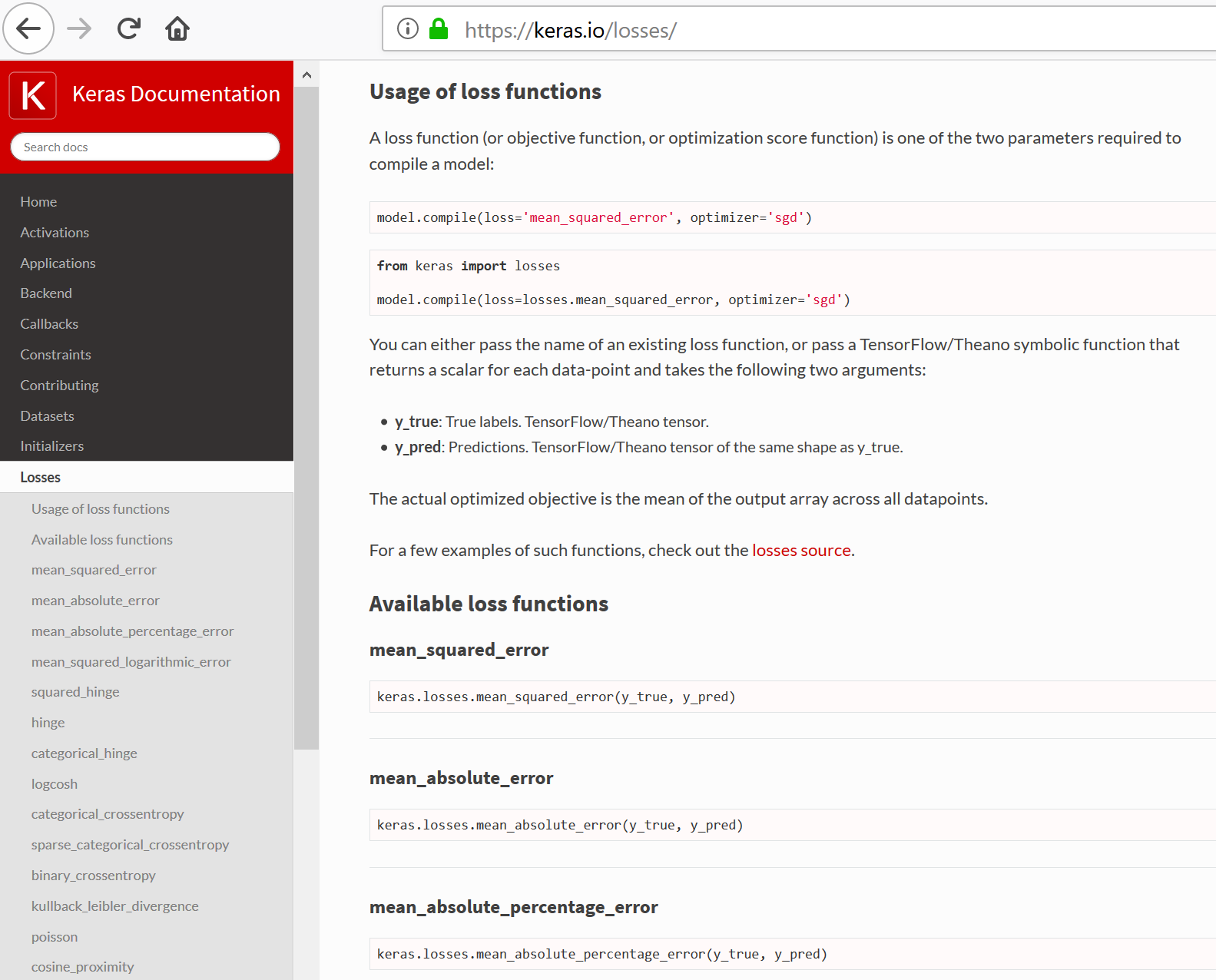
Regularization methods in Keras¶
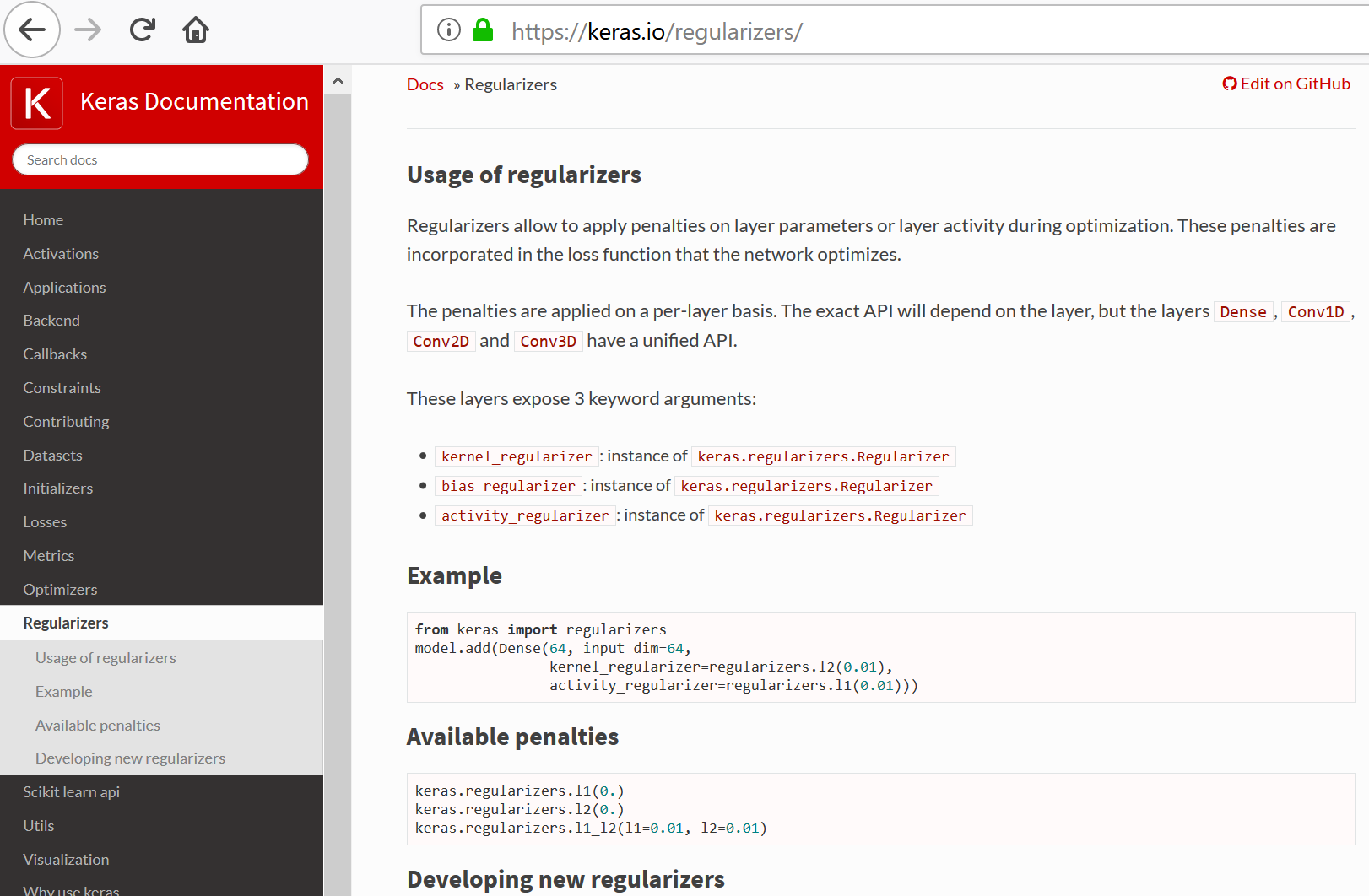
Optimization methods in Keras¶
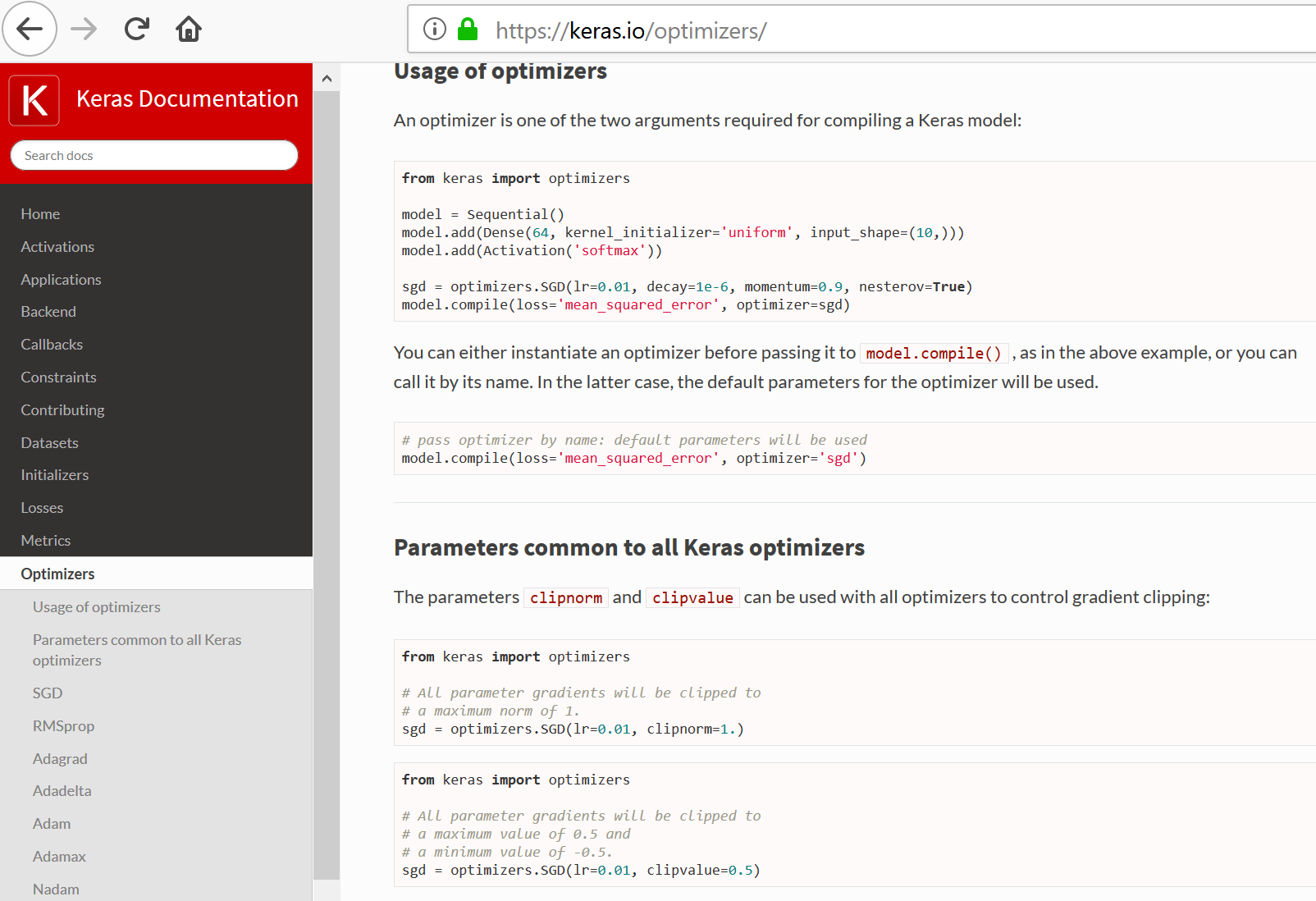
Gradient Descent¶
Went from too-trivial-to-cover in optimization classes, to the current state-of-the-art due to massive data sizes and parallel computing
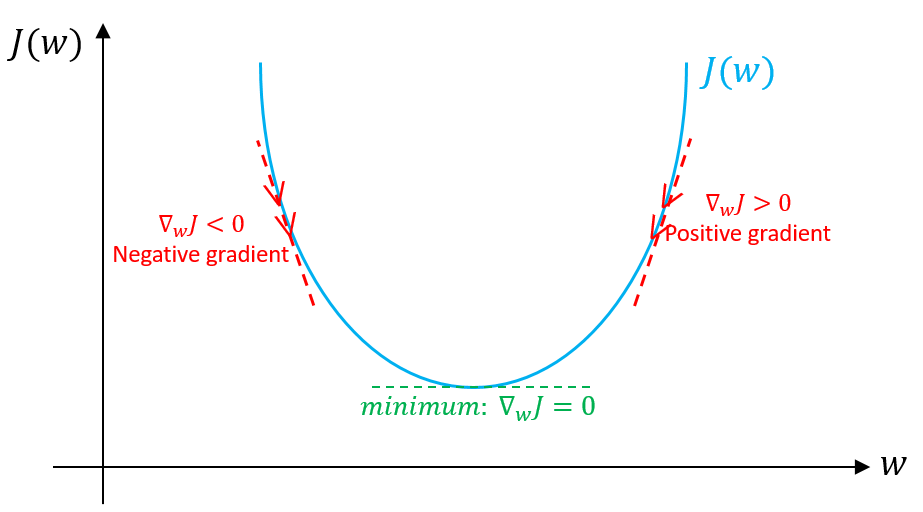
Step size a.k.a. Learning rate.
Activation Functions¶
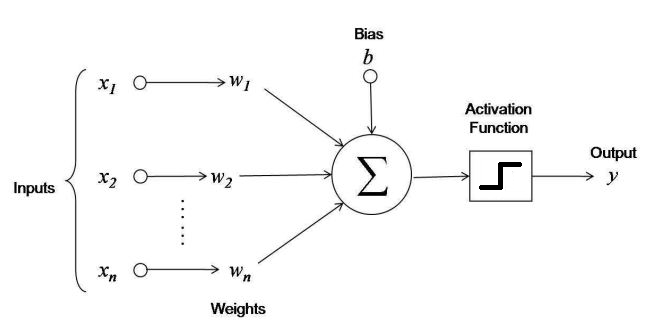
Key nonlinearity needed for Artificial Neural Networks to do anything interesting.
Consider what happens with networks of ANN's with no activation function.
Note these are scalar functions with scalar inputs. First compute the inner product then apply function.
Layers in Keras¶
Connection decisions: Fully-connected Layers, Convolutional Layers
Unified way to define other aspects of network: activation function, dropout, even pre-processing steps
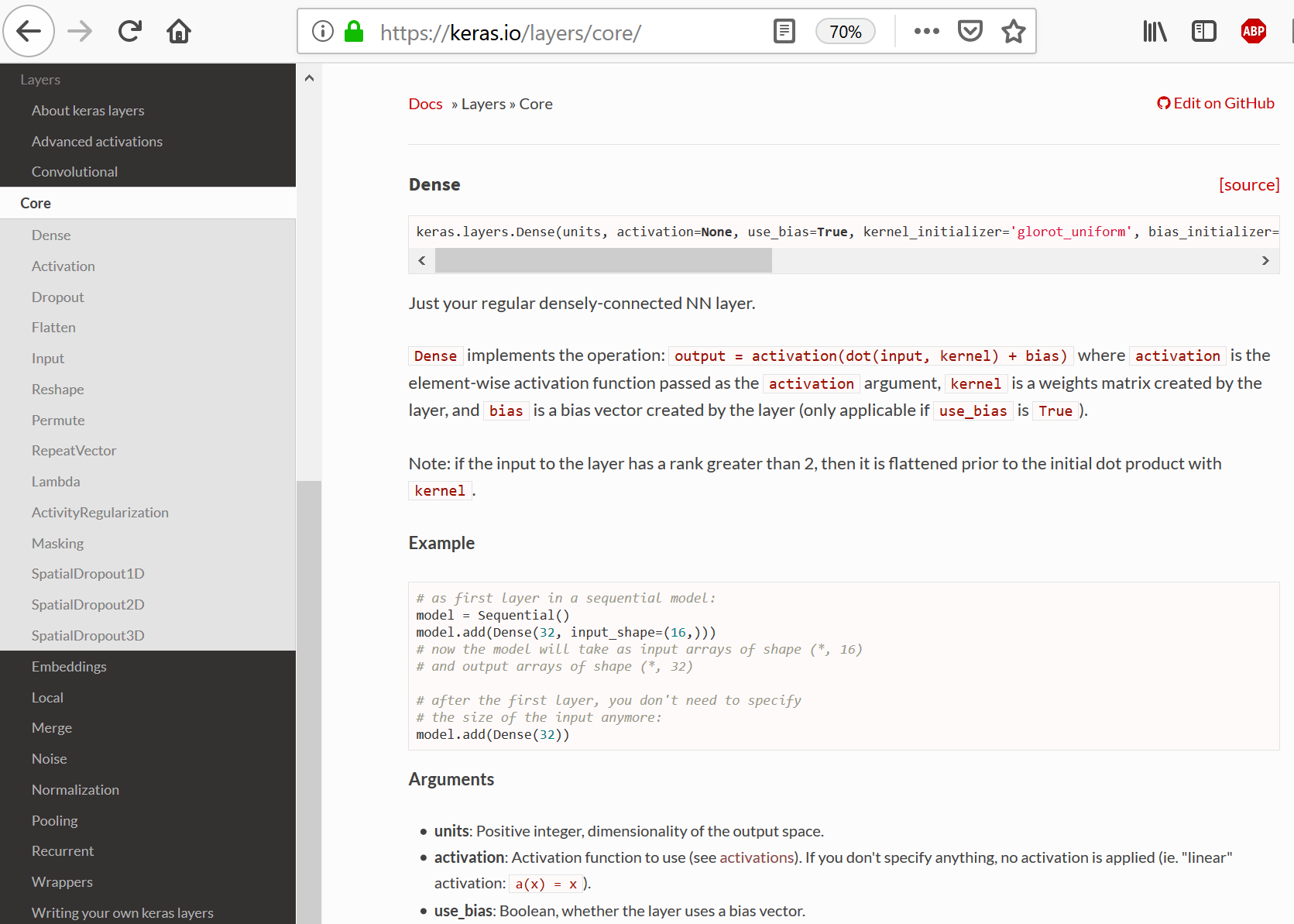
Multilayer (Artificial) Neural Networks - "Feed forward"¶
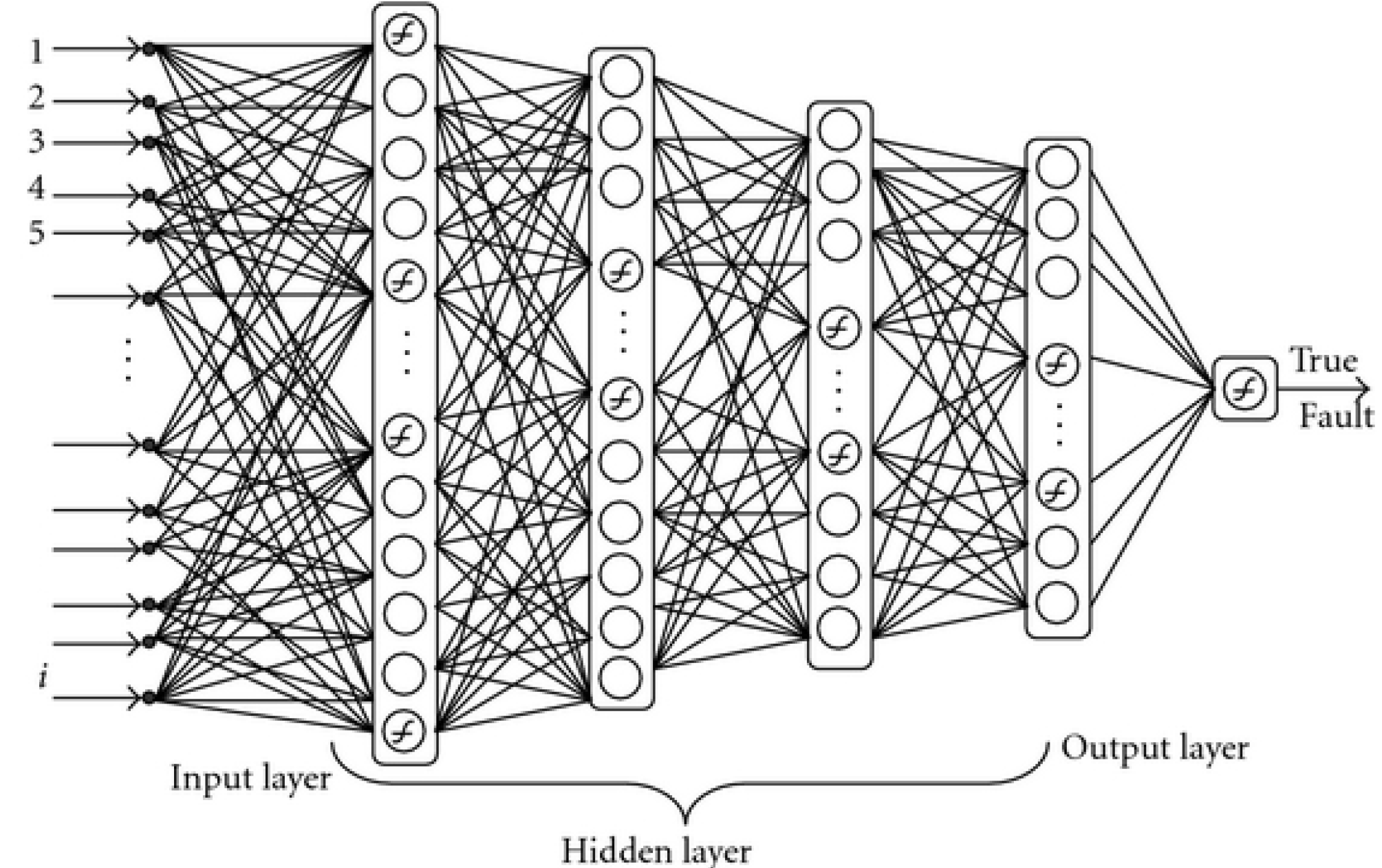
Note each of these is actually two layers in Keras. What kinds are they?
Activation Layer¶
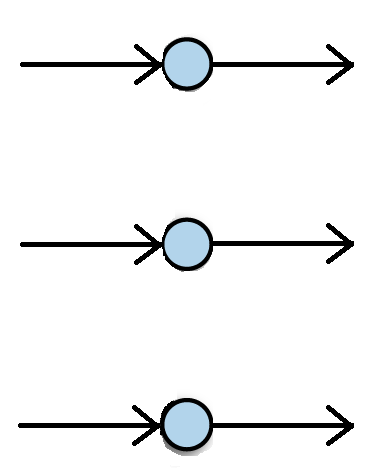
Pooling Layer¶
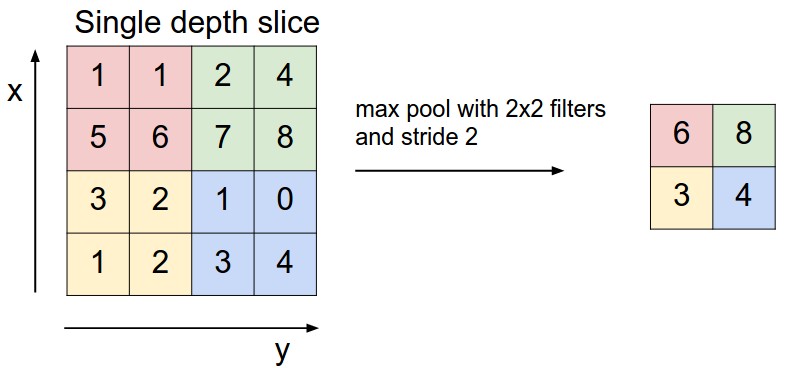
Dropout Layer¶
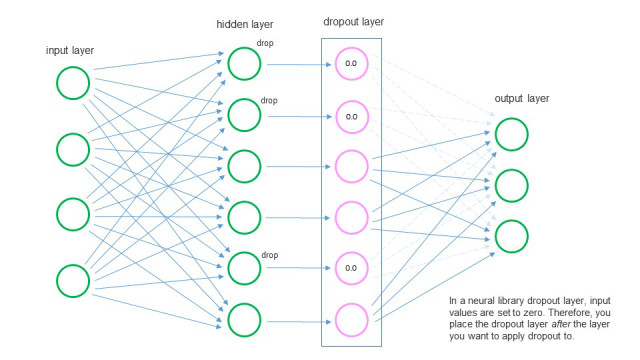
Deep Network Design¶
Make up an architcture - choose layers and their parameters, activation functions, regularization
Choose a Loss function
Choose a optimization method
Choose regularization as optimization options also
Other familiar details like initializing and normalizing data
Keras example¶
"Deep Learning with Python", Francois Chollet, Ch. 2, https://github.com/fchollet/deep-learning-with-python-notebooks
"Getting Started with TensorFlow and Deep Learning: SciPy 2018 Tutorial", Josh Gordon, https://www.youtube.com/watch?v=tYYVSEHq-io, https://www.tensorflow.org/tutorials/keras/
Train your first neural network: basic classification¶
https://www.tensorflow.org/tutorials/keras/basic_classification
https://github.com/tensorflow/docs/blob/master/site/en/tutorials/keras/basic_classification.ipynb
# TensorFlow
import tensorflow as tf
print(tf.__version__)
1.11.0
import keras
keras.__version__
Using TensorFlow backend.
'2.2.4'
fashion_mnist = keras.datasets.fashion_mnist
(train_images, train_labels), (test_images, test_labels) = fashion_mnist.load_data()
class_names = ['T-shirt/top', 'Trouser', 'Pullover', 'Dress', 'Coat',
'Sandal', 'Shirt', 'Sneaker', 'Bag', 'Ankle boot']
print(train_images.shape)
print(test_images.shape)
print(train_labels)
(60000, 28, 28) (10000, 28, 28) [9 0 0 ... 3 0 5]
"Preprocessing"¶
Note values range from 0 to 255 (8 bit integers)
We want to normalize to between 0 and 1
plt.imshow(train_images[0])
plt.colorbar();
train_images = train_images / 255.0
test_images = test_images / 255.0
plt.figure(figsize=(10,10))
for i in range(25):
plt.subplot(5,5,i+1)
plt.xticks([])
plt.yticks([])
plt.grid(False)
plt.imshow(train_images[i], cmap=plt.cm.binary)
plt.xlabel(class_names[train_labels[i]])
Define the network model¶
from keras import models
from keras import layers
model = models.Sequential()
model.add(layers.Flatten(input_shape=(28, 28)))
model.add(layers.Dense(128, activation=tf.nn.relu))
model.add(layers.Dense(10, activation=tf.nn.softmax))
model.summary()
_________________________________________________________________ Layer (type) Output Shape Param # ================================================================= flatten_1 (Flatten) (None, 784) 0 _________________________________________________________________ dense_1 (Dense) (None, 128) 100480 _________________________________________________________________ dense_2 (Dense) (None, 10) 1290 ================================================================= Total params: 101,770 Trainable params: 101,770 Non-trainable params: 0 _________________________________________________________________
"Compile" the network¶
model.compile(optimizer=tf.train.AdamOptimizer(),
loss='sparse_categorical_crossentropy',
metrics=['accuracy'])
- Sparse - recall what this means?
- Cross-entropy
- Categorical Cross-entropy
Optimize the network¶
model.fit(train_images, train_labels, epochs=5)
Epoch 1/5 60000/60000 [==============================] - 5s 84us/step - loss: 0.5049 - acc: 0.8231 Epoch 2/5 60000/60000 [==============================] - 5s 79us/step - loss: 0.3755 - acc: 0.8647 Epoch 3/5 60000/60000 [==============================] - 5s 91us/step - loss: 0.3365 - acc: 0.8775 Epoch 4/5 60000/60000 [==============================] - 5s 82us/step - loss: 0.3124 - acc: 0.8853 Epoch 5/5 60000/60000 [==============================] - 5s 78us/step - loss: 0.2959 - acc: 0.8910
<keras.callbacks.History at 0x22aac439c50>
Compute accuracy on test set¶
test_loss, test_acc = model.evaluate(test_images, test_labels)
print('Test accuracy:', test_acc)
10000/10000 [==============================] - 0s 39us/step Test accuracy: 0.8803
Use network to classify samples¶
predictions = model.predict(test_images)
plt.plot(predictions[1]);
print(np.argmax(predictions[0]), test_labels[0])
9 9
print(class_names[np.argmax(predictions[0])], class_names[test_labels[0]])
Ankle boot Ankle boot
.predict() expects an array of samples (as a tensor)¶
img = test_images[0]
print(img.shape)
(28, 28)
img_tensor = (np.expand_dims(img,0))
print(img_tensor.shape)
(1, 28, 28)
predictions_single = model.predict(img_tensor)
print(predictions_single)
[[9.0164267e-06 1.8462065e-07 8.3386325e-08 2.8834060e-10 8.6999995e-07 4.3465357e-02 1.4766589e-06 1.5969688e-02 3.3855224e-06 9.4054997e-01]]
predictions_single = model.predict(np.array([img]))
print(predictions_single)
[[9.0164267e-06 1.8462065e-07 8.3386325e-08 2.8834060e-10 8.6999995e-07 4.3465357e-02 1.4766589e-06 1.5969688e-02 3.3855224e-06 9.4054997e-01]]
Adding Validation data¶
from sklearn.model_selection import train_test_split
X_train, X_valid, y_train, y_valid = train_test_split(test_images, test_labels, test_size=0.33)
model = models.Sequential()
model.add(layers.Flatten(input_shape=(28, 28)))
model.add(layers.Dense(128, activation=tf.nn.relu))
model.add(layers.Dense(10, activation=tf.nn.softmax))
model.compile(optimizer=tf.train.AdamOptimizer(),
loss='sparse_categorical_crossentropy',
metrics=['accuracy'])
history = model.fit(X_train, y_train, validation_data=(X_valid,y_valid), epochs=20)
Train on 6700 samples, validate on 3300 samples Epoch 1/20 6700/6700 [==============================] - 1s 195us/step - loss: 0.8054 - acc: 0.7163 - val_loss: 0.6366 - val_acc: 0.7767 Epoch 2/20 6700/6700 [==============================] - 1s 100us/step - loss: 0.5513 - acc: 0.8073 - val_loss: 0.5830 - val_acc: 0.7967 Epoch 3/20 6700/6700 [==============================] - 1s 94us/step - loss: 0.4841 - acc: 0.8296 - val_loss: 0.5589 - val_acc: 0.8003 Epoch 4/20 6700/6700 [==============================] - 1s 98us/step - loss: 0.4782 - acc: 0.8312 - val_loss: 0.5511 - val_acc: 0.7970 Epoch 5/20 6700/6700 [==============================] - 1s 102us/step - loss: 0.4209 - acc: 0.8493 - val_loss: 0.5376 - val_acc: 0.8194 Epoch 6/20 6700/6700 [==============================] - 1s 102us/step - loss: 0.3972 - acc: 0.8601 - val_loss: 0.4877 - val_acc: 0.8339 Epoch 7/20 6700/6700 [==============================] - 1s 102us/step - loss: 0.3814 - acc: 0.8603 - val_loss: 0.4812 - val_acc: 0.8358 Epoch 8/20 6700/6700 [==============================] - 1s 122us/step - loss: 0.3779 - acc: 0.8637 - val_loss: 0.4776 - val_acc: 0.8418 Epoch 9/20 6700/6700 [==============================] - 1s 131us/step - loss: 0.3382 - acc: 0.8782 - val_loss: 0.4913 - val_acc: 0.8282 Epoch 10/20 6700/6700 [==============================] - 1s 135us/step - loss: 0.3271 - acc: 0.8810 - val_loss: 0.5122 - val_acc: 0.8252 Epoch 11/20 6700/6700 [==============================] - 1s 139us/step - loss: 0.3026 - acc: 0.8927 - val_loss: 0.4710 - val_acc: 0.8439 Epoch 12/20 6700/6700 [==============================] - 1s 139us/step - loss: 0.2973 - acc: 0.8939 - val_loss: 0.5062 - val_acc: 0.8403 Epoch 13/20 6700/6700 [==============================] - 1s 111us/step - loss: 0.2971 - acc: 0.8942 - val_loss: 0.4984 - val_acc: 0.8367 Epoch 14/20 6700/6700 [==============================] - 1s 97us/step - loss: 0.2761 - acc: 0.8961 - val_loss: 0.5173 - val_acc: 0.8355 Epoch 15/20 6700/6700 [==============================] - 1s 102us/step - loss: 0.2596 - acc: 0.9064 - val_loss: 0.4911 - val_acc: 0.8385 Epoch 16/20 6700/6700 [==============================] - 1s 102us/step - loss: 0.2528 - acc: 0.9049 - val_loss: 0.5049 - val_acc: 0.8376 Epoch 17/20 6700/6700 [==============================] - 1s 100us/step - loss: 0.2367 - acc: 0.9160 - val_loss: 0.5081 - val_acc: 0.8388 Epoch 18/20 6700/6700 [==============================] - 1s 101us/step - loss: 0.2387 - acc: 0.9164 - val_loss: 0.5045 - val_acc: 0.8406 Epoch 19/20 6700/6700 [==============================] - 1s 100us/step - loss: 0.2249 - acc: 0.9196 - val_loss: 0.5213 - val_acc: 0.8409 Epoch 20/20 6700/6700 [==============================] - 1s 102us/step - loss: 0.2149 - acc: 0.9200 - val_loss: 0.4988 - val_acc: 0.8418
acc = history.history['acc']
val_acc = history.history['val_acc']
loss = history.history['loss']
val_loss = history.history['val_loss']
epochs = range(len(acc))
plt.plot(epochs, acc, 'bo', label='Training acc')
plt.plot(epochs, val_acc, 'b', label='Validation acc')
plt.title('Training and validation accuracy')
plt.legend()
plt.figure()
plt.plot(epochs, loss, 'bo', label='Training loss')
plt.plot(epochs, val_loss, 'b', label='Validation loss')
plt.title('Training and validation loss')
plt.legend();
Convolutional Network¶
from keras import layers
from keras import models
model = models.Sequential()
model.add(layers.Conv2D(32, (3, 3), activation='relu', input_shape=(28, 28, 1)))
#model.add(layers.MaxPooling2D((2, 2)))
model.add(layers.Conv2D(64, (3, 3), activation='relu'))
model.add(layers.MaxPooling2D((4, 4)))
model.add(layers.Conv2D(64, (3, 3), activation='relu'))
model.summary()
_________________________________________________________________ Layer (type) Output Shape Param # ================================================================= conv2d_1 (Conv2D) (None, 26, 26, 32) 320 _________________________________________________________________ conv2d_2 (Conv2D) (None, 24, 24, 64) 18496 _________________________________________________________________ max_pooling2d_1 (MaxPooling2 (None, 6, 6, 64) 0 _________________________________________________________________ conv2d_3 (Conv2D) (None, 4, 4, 64) 36928 ================================================================= Total params: 55,744 Trainable params: 55,744 Non-trainable params: 0 _________________________________________________________________
model.add(layers.Flatten())
#model.add(layers.Dense(64, activation='relu'))
model.add(layers.Dense(10, activation='softmax'))
model.summary()
_________________________________________________________________ Layer (type) Output Shape Param # ================================================================= conv2d_1 (Conv2D) (None, 26, 26, 32) 320 _________________________________________________________________ conv2d_2 (Conv2D) (None, 24, 24, 64) 18496 _________________________________________________________________ max_pooling2d_1 (MaxPooling2 (None, 6, 6, 64) 0 _________________________________________________________________ conv2d_3 (Conv2D) (None, 4, 4, 64) 36928 _________________________________________________________________ flatten_2 (Flatten) (None, 1024) 0 _________________________________________________________________ dense_3 (Dense) (None, 10) 10250 ================================================================= Total params: 65,994 Trainable params: 65,994 Non-trainable params: 0 _________________________________________________________________
from keras.datasets import mnist
from keras.utils import to_categorical
(train_images, train_labels), (test_images, test_labels) = mnist.load_data()
train_images = train_images.reshape((60000, 28, 28, 1))
train_images = train_images.astype('float32') / 255
test_images = test_images.reshape((10000, 28, 28, 1))
test_images = test_images.astype('float32') / 255
train_labels = to_categorical(train_labels)
test_labels = to_categorical(test_labels)
Downloading data from https://s3.amazonaws.com/img-datasets/mnist.npz 11493376/11490434 [==============================] - 4s 0us/step
model.compile(optimizer='rmsprop',
loss='categorical_crossentropy',
metrics=['accuracy'])
model.fit(train_images, train_labels, epochs=5, batch_size=64)
Epoch 1/5 60000/60000 [==============================] - 82s 1ms/step - loss: 0.1527 - acc: 0.9525 Epoch 2/5 60000/60000 [==============================] - 82s 1ms/step - loss: 0.0441 - acc: 0.9869 Epoch 3/5 60000/60000 [==============================] - 80s 1ms/step - loss: 0.0311 - acc: 0.9907 Epoch 4/5 60000/60000 [==============================] - 82s 1ms/step - loss: 0.0241 - acc: 0.9928 Epoch 5/5 60000/60000 [==============================] - 79s 1ms/step - loss: 0.0198 - acc: 0.9937
<keras.callbacks.History at 0x22acb7a5fd0>
test_loss, test_acc = model.evaluate(test_images, test_labels)
10000/10000 [==============================] - 12s 1ms/step
test_acc
0.9915

